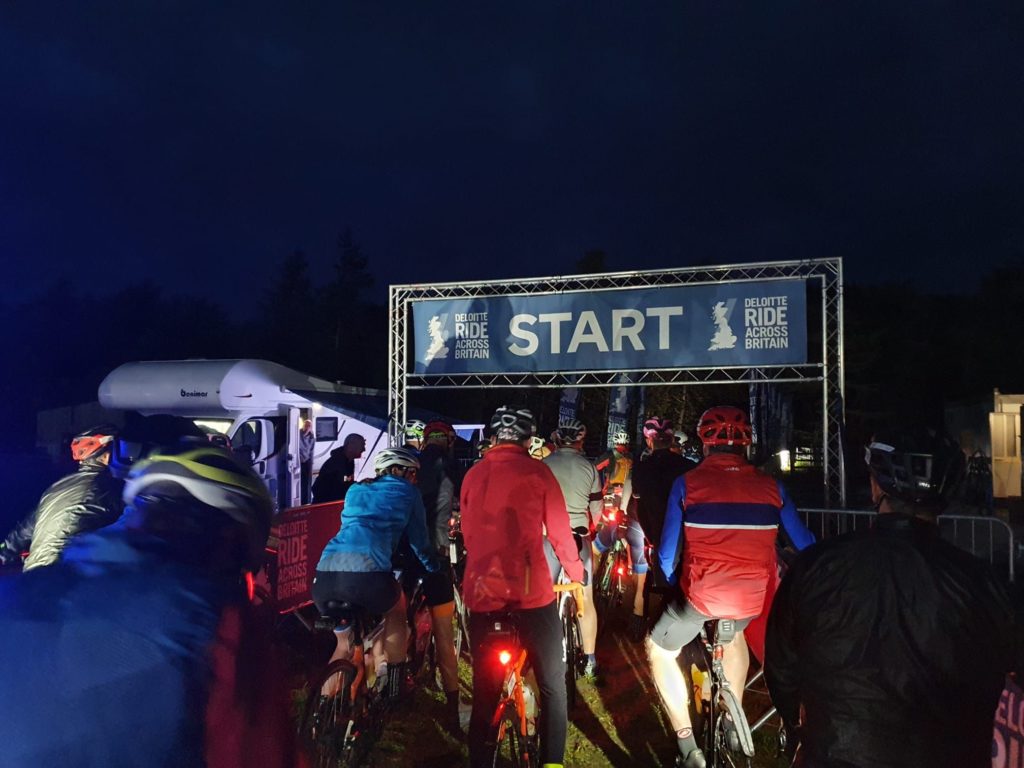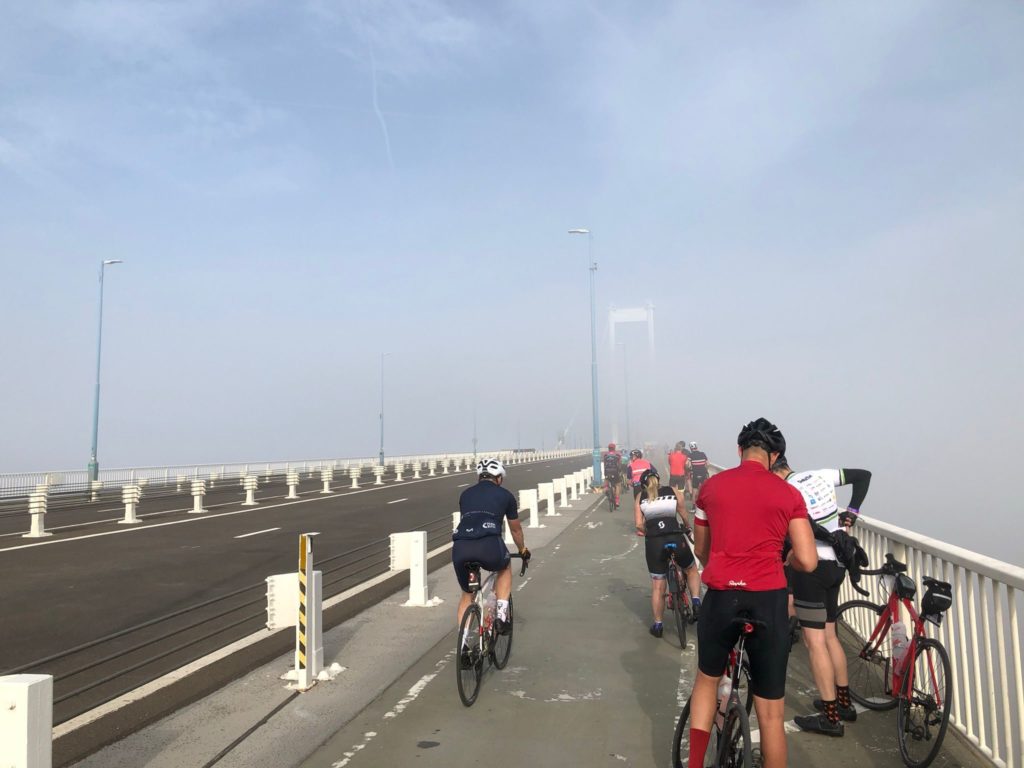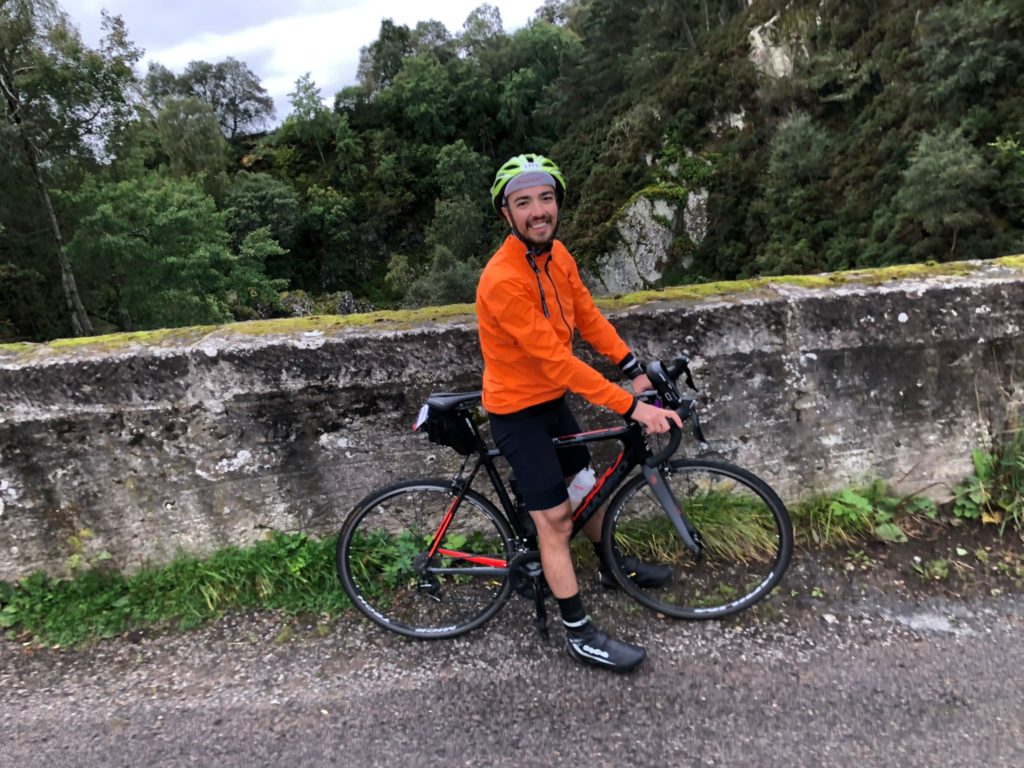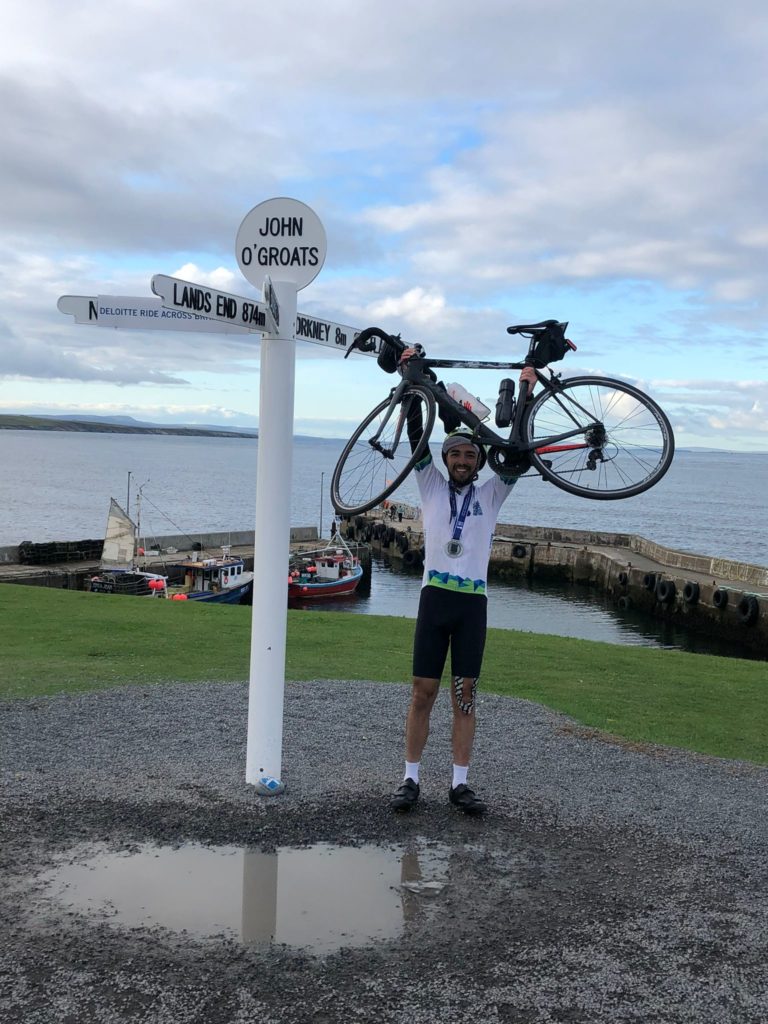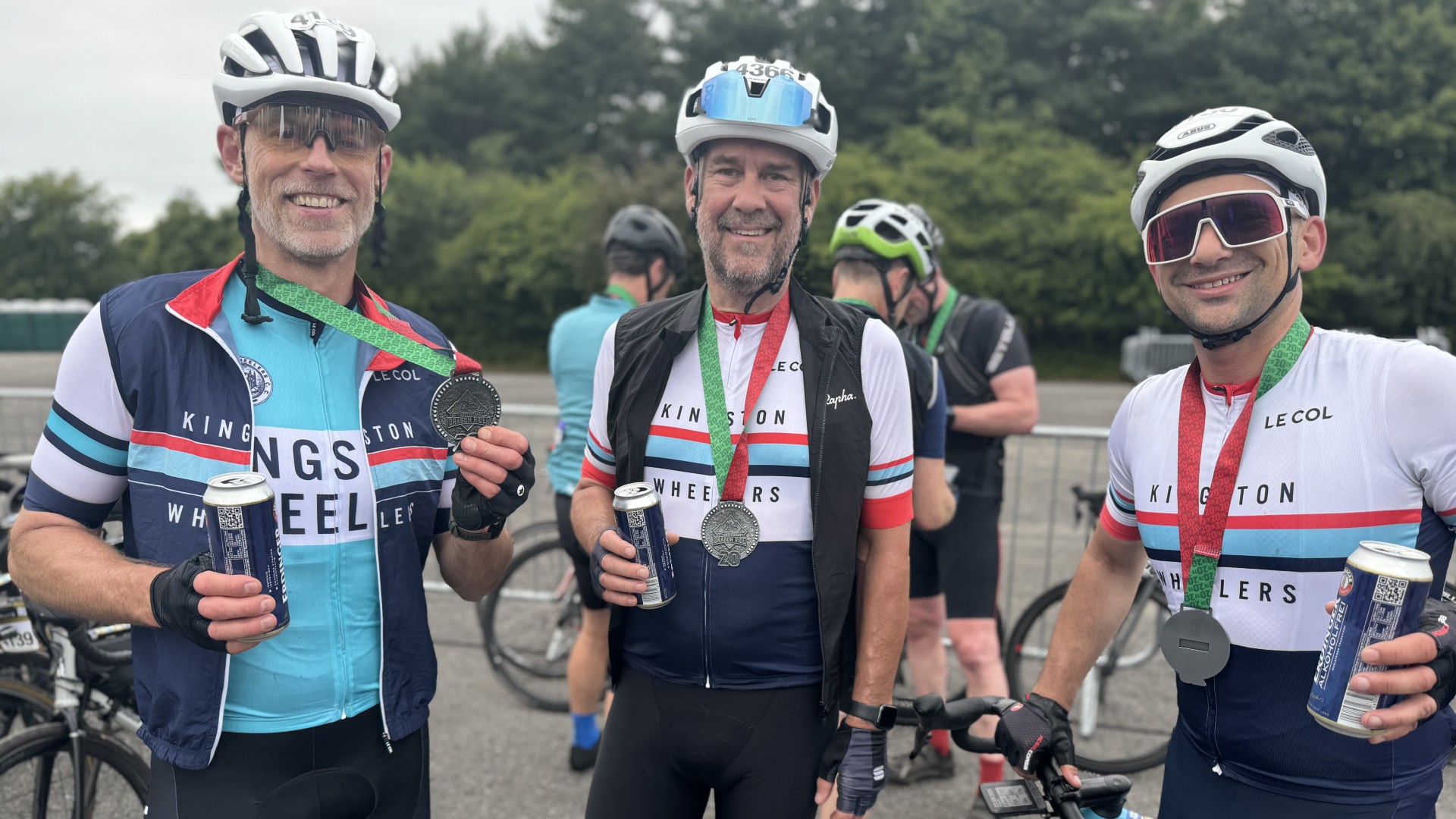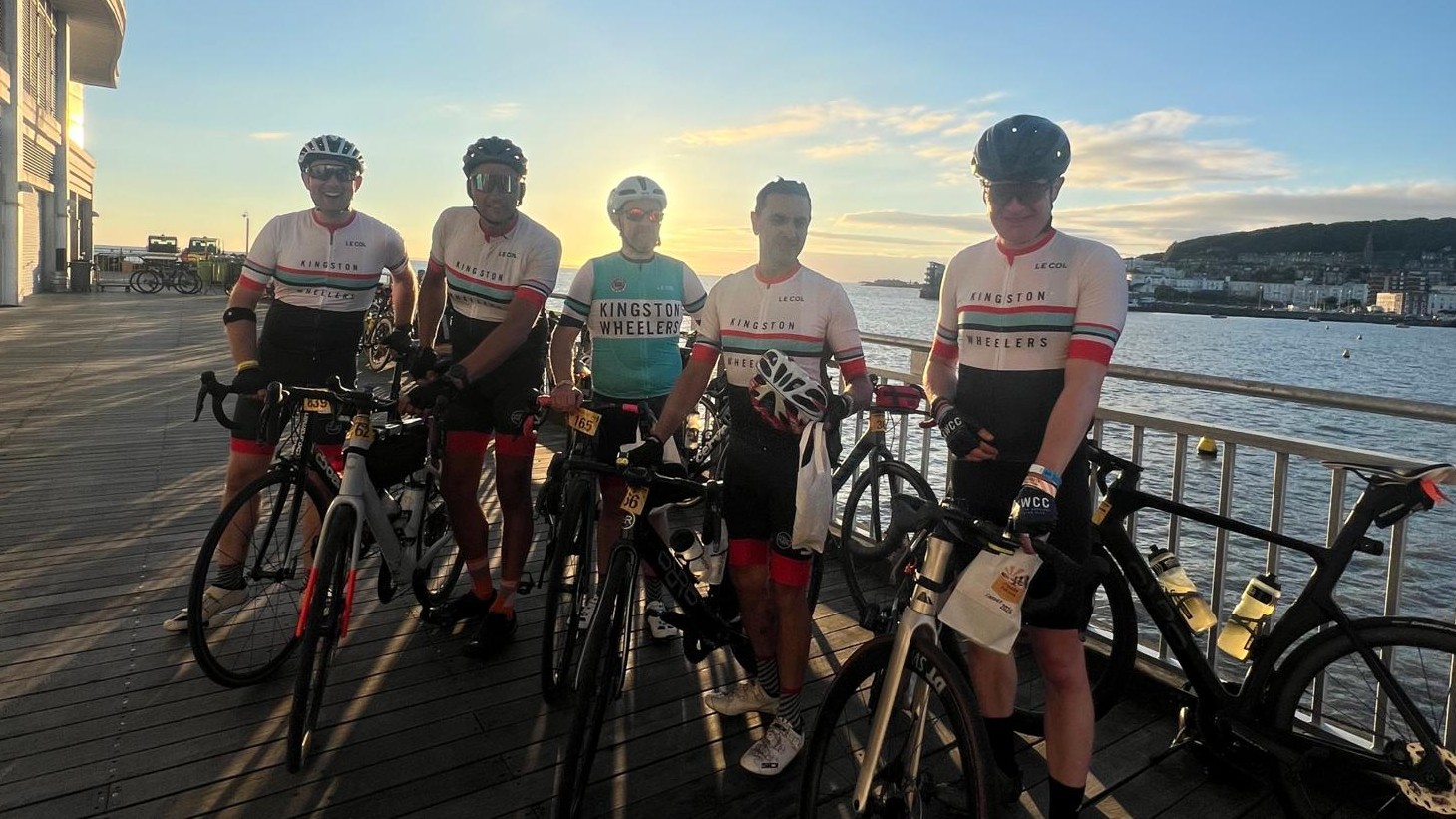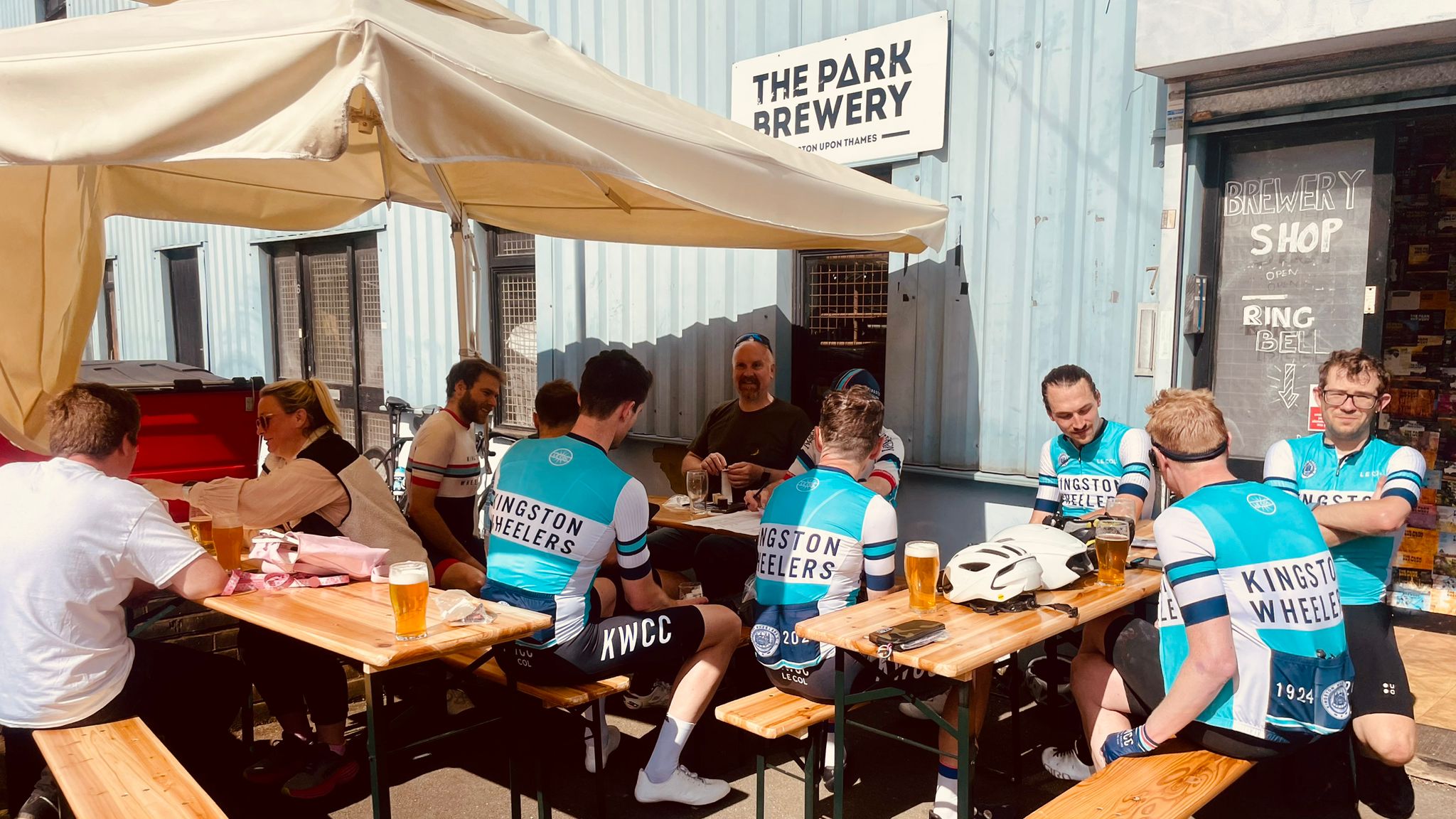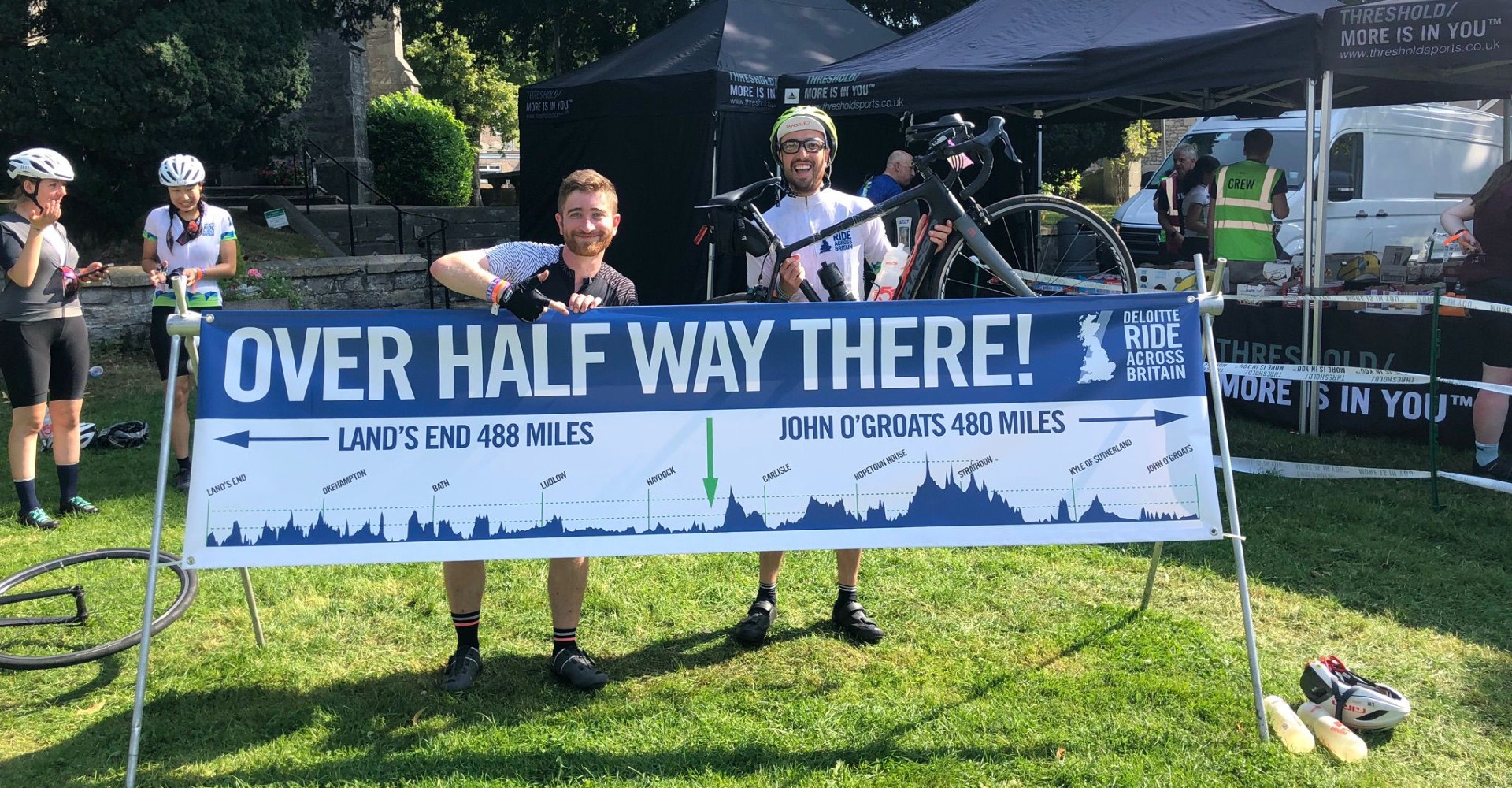
From novice cyclist to finishing Ride Across Britain
RAB is an annual endurance event where a group of cyclists (from beginner to pro) cycle the length of Britain from Land’s End in Cornwall to John O’Groats in Scotland. The event covers 970 miles over a period of 9 (epic) days. Our member Vagan Vardumyan has shared his journey from novice cyclist to completing RAB.
How it all started
I got a ballot place to take part in RAB 2019. However, I ended up deferring my entry to 2020 which was in turn deferred to 2021. The latter was due to COVID while the former was due to my fear of not being ready for the event and dealing with a running injury.
I had three years to prepare for RAB. However, I commenced my training at the end of May 2021, circa three months before the actual event. I was certain that it was going to be more of a mental battle rather than a physical one, yet I knew to enjoy the event I would need to train for it. The official training plan was 12 months long and included countless hours on the bike, Pilates, conditioning, cross and weight training. In addition, a month of tapering off. Unfortunately, I only focused on cycling and running (addiction to running will convince you that this is a form of cross training) and my tapering was only two weeks. In the end I realised that the three month intense training was sufficient for me to complete RAB, maybe because of having a decent level of fitness thanks to running and/or having a strong mindset. However, only during the ride I learned how I should have better prepared myself for the event – the benefit of hindsight can now at least be a lesson.
RAB is a fully organised event. Our day would start at the base camp where the organisers would have set up our individual tents, provided us with delicious (not so nutritious for me – more on this later) meals, shower facilities, stretching and yoga drop-in sessions, physiotherapy, bike servicing, washing stations and mechanics. Once we left the base camp to cycle to the next place, the organisers would then move all these facilities to the next base camp. All we had to do was pack the contents of our tents, leave them with the organisers, cycle all day then return to the base camp to pick up our belongings and get ready for the following day.
The event included at least two pit stops where we could stop to eat, drink and fill up our back pockets with snacks, use the toilet facilities, consult physiotherapists or mechanics. We also had on-route mobile paramedics and mechanics.
Training with the Wheelers
I bought my bike in 2019 in preparation for RAB in Sep 2019. However, I never really used it. I started to train for my event at the end of May 2021 where I started with a few short laps around Richmond Park with one of my neighbours and work colleague. The laps were on a regular basis and continued to increase in terms of the distance. However, I knew I had to up my training – learn to cycle in groups, climb and do long distance rides.
While in Richmond Park I noticed many people wearing the Kingston Wheelers (KW) jerseys. I quickly googled the name as I wanted to join the club because I didn’t know any of the routes around my area and wanted to find people who would be keen to cycle with me as part of my training.
I recall missing the deadline for applying to join the trial ride which I think happened at the start or end of each month on a Sunday. I knew joining KW would up my training and hence I contacted someone on Instagram desperately asking them to add me to the trial session I would have missed otherwise. I was very happy when I was given a spot at the trial ride. However, I was nervous as I had only learned to use the cleats a week before the trial and wasn’t sure if I would be too slow and become a nuisance to others.
KW became a very important part of my training. I recall posting on the forum a few times a week as I was keen to find people to train with. I would sign up to any ride suitable for my level as I didn’t want to be that person who slows everyone down. I am very thankful to the club for their support and help. I certainly cycled to many amazing places and learned what worked for me on long distance rides.
My main training goal was to do 100 miles and lots of hills. Just before I started to taper off, I did a few back-to-back 100 miles. I do believe the intense 3-month training was sufficient for me. However, I learned soon during the event that doing back-to-back 100 miles should have been extended to 4 days of 100 miles in a row as this would have prepared me better especially to better implement the aspects of nutrition and water consumption.
The cycling
On average we cycled around 108 miles a day. Many people warned me of the first two days being the worst as both Cornwall and Devon are known for relentless climbing. While it certainly was very hard, the two-week tapering allowed me to have fresh muscles which enabled me to complete 2/3 of the route in Cornwall with confidence.
In Cornwall there were three accidents. One of the accidents involved a participant who had underestimated the steep descent which turned into a road where the cyclist collided with a van. We were later told this participant was airlifted and was due to have an operation. As a result of this, the route was changed and we ended up with an additional 10k of cycling which would not have been an issue in itself if it wasn’t for the extra 300 meter climbing it came with.
Day three was supposed to be the easiest day and many presented this to me as a ‘recovery’ ride. What they really meant was that there would be less climbing, but the distance would be still circa 100 miles and by ‘less climbing’ they didn’t mean no climbing at all. This was one of the hardest rides I have ever done. I texted my other half and told her I was struggling with nausea and did not think I would finish the day, let alone get to the finish line at John O’Groats!
The nausea went away after a while, but I started to have bad wrist pains and my 2 fingers became numb which in fact haven’t fully recovered to date. I started to cry as I realised that my journey may end on day three. However, I chose to ignore the pains and kept repeating in my head ‘keep calm and carry on’ – a mantra which became my motto along a few very cheesy songs.
When I got to the base camp, I told a few of the participants that this may potentially be my last day as I was concerned about not being able to control the bike if the injury was to get worse which may result in something devastating – an accident or long-term nerve damage.
A month before the event, I had a professional bike fit as I knew it was very important given the hours spent on the bike. As I was not able to have a follow up appointment due to the bike shop’s availability, I ended up causing myself unnecessary pain and discomfort during the event. This could have certainly been avoided had I not been so unorganised.
Towards the very final days I decided to change my bike set-up as the wrist pain was impacting my performance. I consulted a mechanic who offered to flip the stem and add an additional bar tape to reduce the impact felt on my hands especially when going downhill on rather uneven roads in Scotland. While this seemed to ease the wrist pains, I started to develop knee pains as ultimately my bike set-up was still incorrect. It certainly shifted the pains from one body part to another, but I knew this strategy would help me complete the event without developing a significant injury.
The rest of the days involved many hours of cycling through beautiful places and endless climbing. I certainly wasn’t trying to imitate Marco Pantani, who if you don’t know was widely regarded as one of the greatest climbing specialists, but I didn’t think the climbing was particularly hard as I trained for it and seemed to develop a technique which involved taking my time to enjoy the pain. While it may sound ridiculous to many, I actually enjoyed the pain as it was meditative and each time I reached a small peak I felt a sense of achievement. That could be the reason many endurance athletes do what they do – pain followed by a sense of achievement (scientists would refer to this as a surge of endorphins, I guess).
I would not say I had amazing or terrible days. I would say I had amazing or terrible hours on the bike. The hours which I thought were terrible were not because of the distance or the endless climbing, they were due to struggling to consume the right amount of calories, drinking enough water and having a bad bike set-up. If you are really picky, I would add lack of sleep to this small but important list.
The event organisers provided amazing food, however, the choices were aimed at carnivores and vegetarians and were not suitable for vegans like myself. While there was always a ‘vegan’ option available, I found that the vegan meals were not prepared with sports (endurance) nutrition in mind. Hence, very often I felt nauseous.
I soon started to hate all the sugary and highly processed snacks given to us at pit stops – at least there were some vegan options which I was grateful for. I knew there wasn’t much point in complaining and being negative. I accepted the dilemma and got on with it by eating bigger portions of vegan porridge and slices of bread for breakfast.
While I was drinking the normal amounts of water (for a normal non cycling day) in the first few days of the event, I soon realised that many of my issues were also due to not drinking enough. I found myself forcing myself to eat and drink even when I thought I couldn’t anymore as I knew without the regular intake of food and water I would become nauseous and dizzy.
A few days before the event someone told me ‘Good luck, with the weather’. I knew what they meant because I was very concerned about not having the right gear. While cycling when the weather is nice and sunny requires less thought and gear, I had no experience of cycling in very cold weather and never owned any winter gear such as overshoes, arm and leg warmers. Certainly when going down the cold, rainy and windy mountains of Scotland I felt appreciative of all the gear I had invested in as it really helped me overcome the weather related challenges with more ease and pleasure.
Overall, however, we were very lucky with the weather – the first five days we had amazing sunny days – in fact I enjoy running and cycling in the heat. Once we reached Scotland, I noticed that the weather kept getting colder each day and it would rain a few hours of the day. I didn’t think the rain was an issue as I was fully prepared for it – I had many training rides in the rain as we had a very rainy summer and I also had appropriate gear for it.
The only day where I struggled with the weather was the morning of the last day where I didn’t wear my overshoes (thinking it would not rain) and the cold wind (6 degrees) went through my summer cycling shoes. While on the previous days I didn’t race and actually took my time to preserve the energy to complete the day till the cut off time, on the last day given how cold it was, I ended up racing the first part of the day in order to warm up. However, my feet were still frozen and even grabbing a pair of disposable gloves from the medics to cover the shoes didn’t seem to help. I knew it was temporary as everything else in life, so I knew in the early afternoon I would feel warmer, so I continued to race.
During the ride I met so many incredible people who passionately shared their inspiring life stories and reasons for doing the ride. I even shared a 5-minute ride with Elinor Barker (Team GB, Olympic medallist) who was invited as a speaker at one of the evenings and cycled with us.
There were hours where I cycled alone and there were also hours where I cycled with a large or small group of people. I really enjoyed the rides even when I was not feeling great because I enjoyed getting small achievements every time I overcame an issue – feeling nauseous for 4 hours but persevering by following the mantra in my head of keeping calm and carrying on.
I did not take anything for granted.
I knew my journey could end any minute even when I was 1 mile away from John O’Groats. There were so many things that were working against us – potential COVID (suspension from the event), diarrhoea and vomiting caused by a bug which was quickly spreading around the base camp, injury, accidents, weather, mechanical issues, not making the cut off time. I found myself living each minute mindfully – concentrating on the now and dealing with the current situation. I really gave my all and even if I didn’t finish the event I would have been proud of myself as I did everything that was within my control.
Crossing the finish line was an amazing feeling. I never felt so proud of myself. Cycling for 9 epic days gave me a feeling of achievement I did not have when I graduated from university where I spent three years of working hard. Getting the medal was more important for me than getting my degree maybe because it really meant so much to me or the pain and torture I put myself through were worth it.
Prior to signing up for RAB, people told me that the event “will make you fall out of love with cycling”. However, in my case the event actually made me fall in love with the discipline and I cannot wait to explore the world on the bike.

